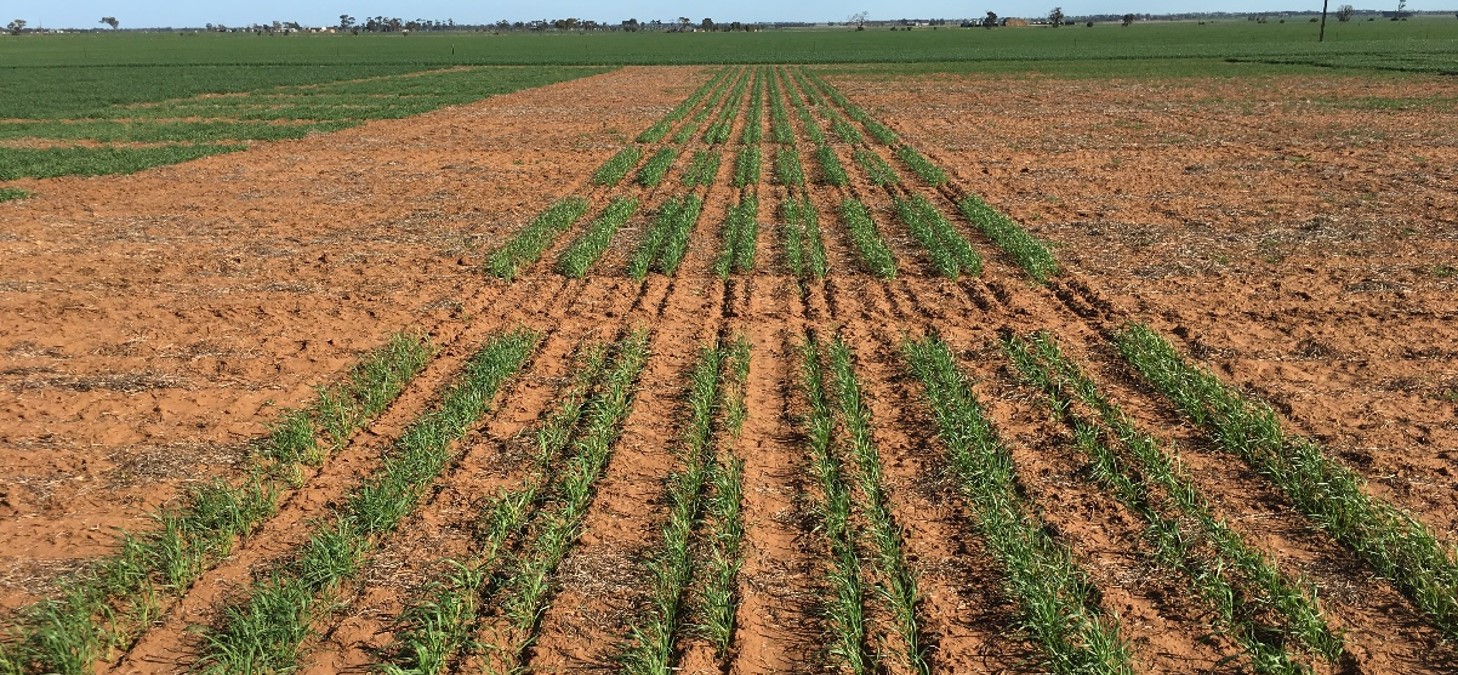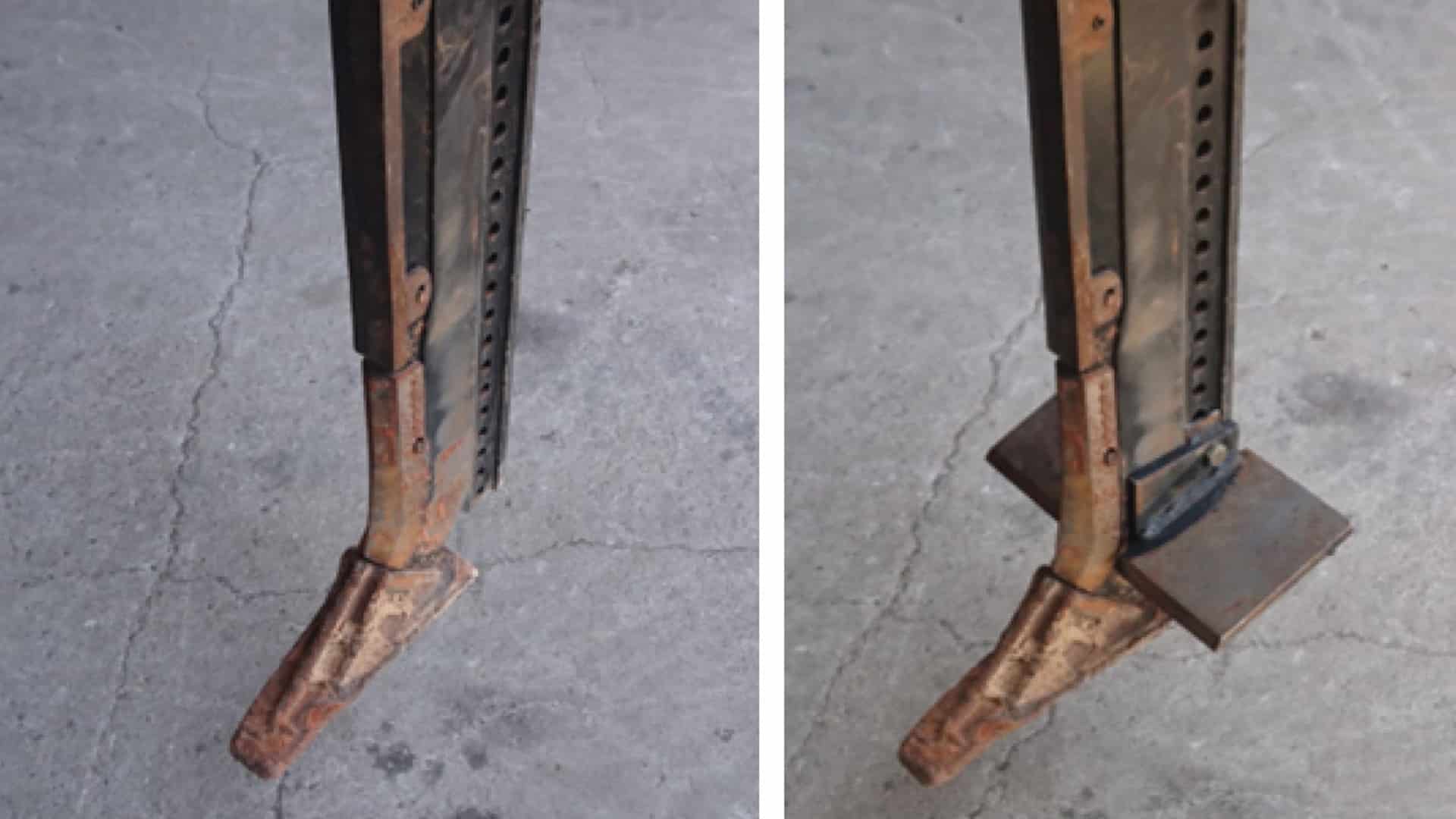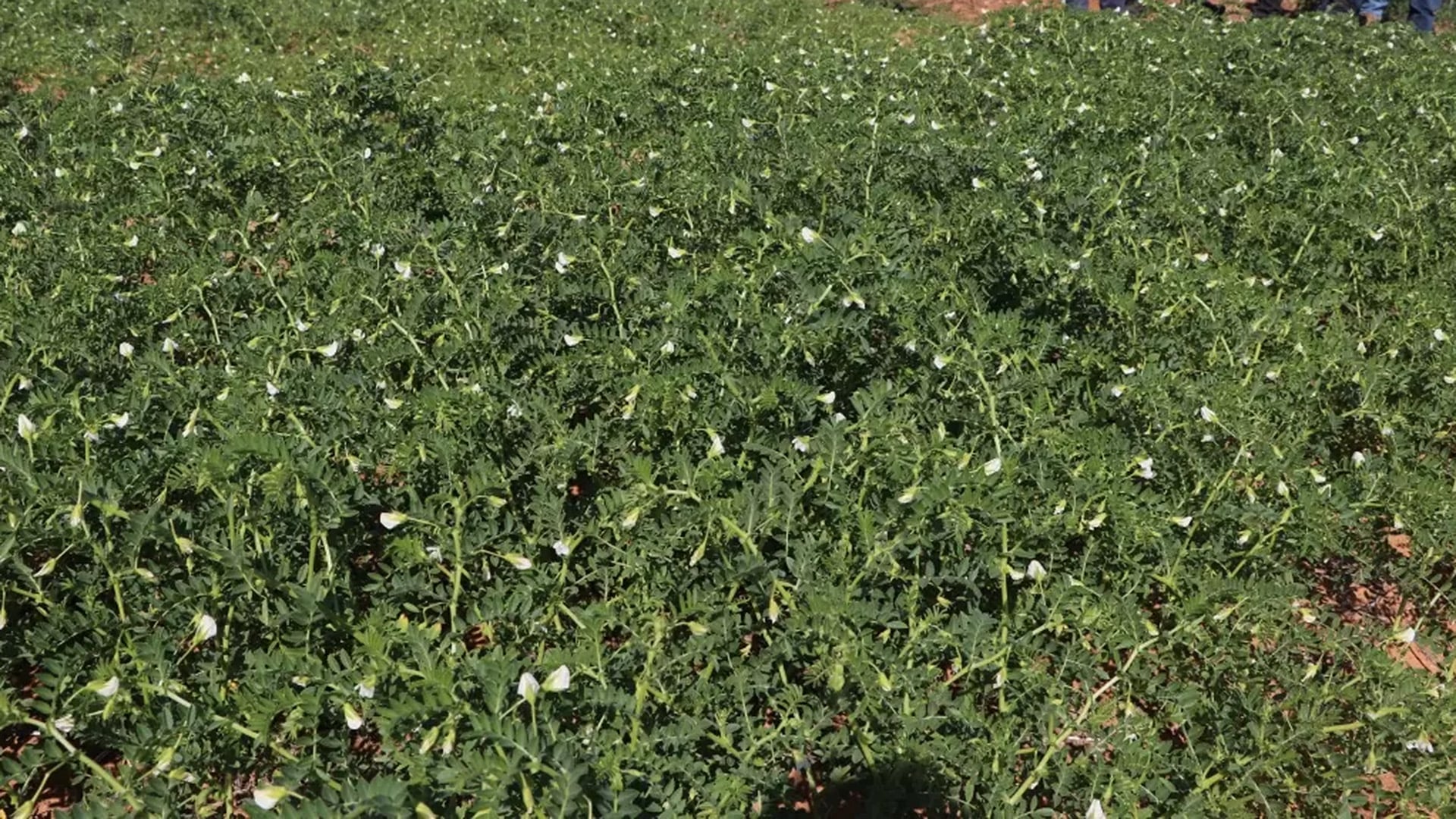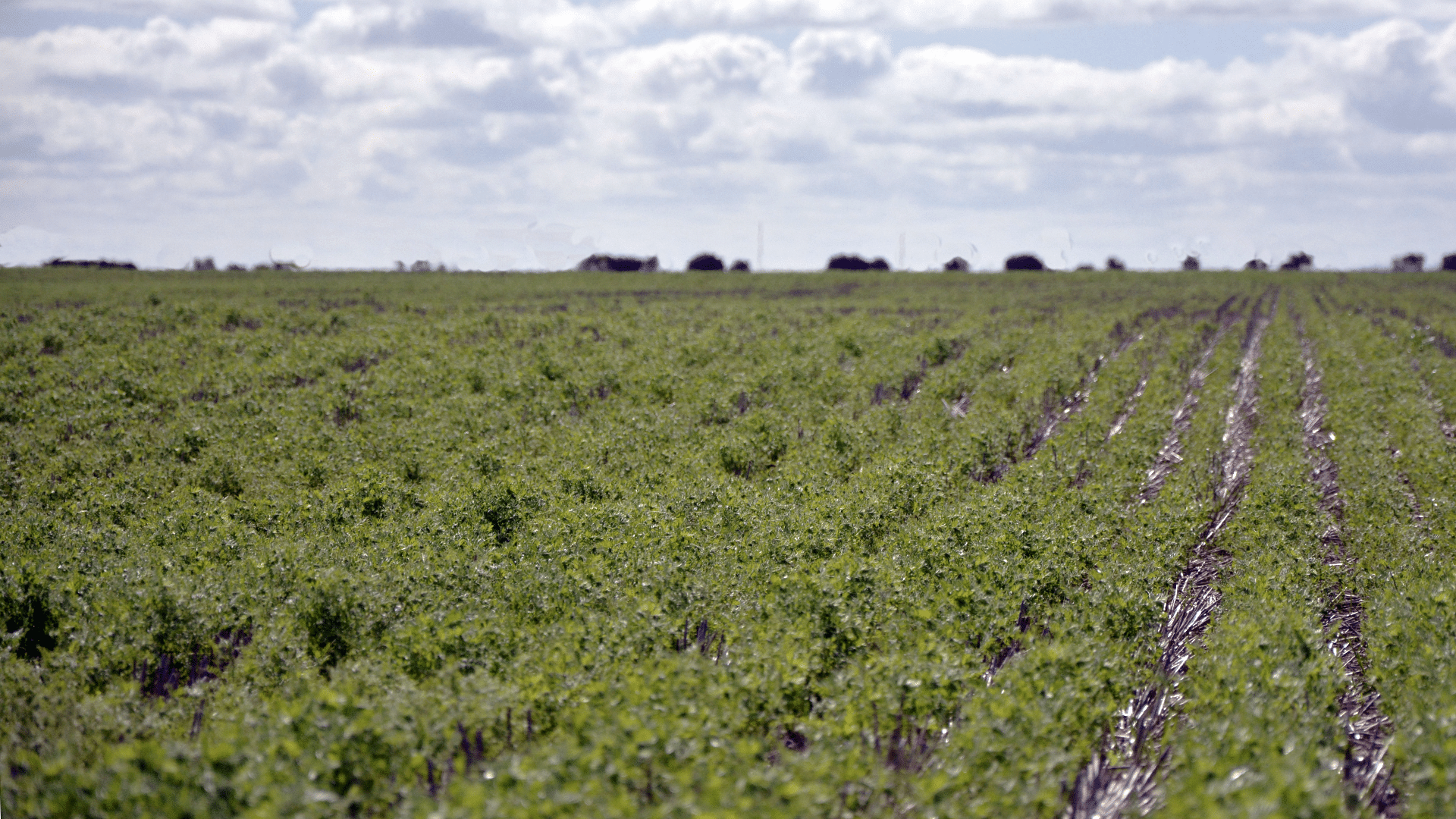START
FINISH

Summary
Variations in the nitrate transporter gene NRT2.3, which is associated with higher nitrogen use efficiency and grain yield in rice (Fan et al. 2016) were detected in ten durum lines. These were then evaluated in both controlled-environment and field conditions over two years, under two levels of N-input.
These results were compared with those for the leading durum varieties DBA Aurora and Saintly, as controls to identify lines with potential for durum breeding programs.
Background
Nitrogen fertiliser is an expensive input for grain growers. Although crops have been bred to show improved yields in the presence of surplus nitrogen, this does not allow for limits in nitrogen use efficiency.
In rice, a particular form of a nitrate transporter gene (NRT2.3b) has been shown to improve nitrogen use efficiency up to 40 per cent (Fan et al. 2016, PNAS 113: 7118). A similar increase in nitrogen use efficiency in durum wheat would significantly reduce the amount of nitrogen fertiliser required to achieve the 13 per cent grain protein required for Durum 1 (DR1) specification.
Research Aims
The core objectives of the project were to:
- Benchmark N-use efficiency for leading commercially grown durum varieties.
- Understand the importance of background genetics in N-use efficiency.
- Evaluate N-use efficiency in selected durum germplasms through tub- and field-based trials.
In The Field
The durum version of the N-use efficiency gene (NRT2.3) was amplified in 104 durum genotypes, which were then screened for the presence of a known high N-use efficiency variant.
Twelve genotypes were then selected for glasshouse experiments and field trials at Roseworthy and Bordertown. Five of these expressed NRT2.3 variants containing an insertion or deletion, while others contained single nucleotide polymorphisms (SNPs) or amino acid changes.
Commercial durum varieties DBA Aurora and Saintly were also included for benchmarking.
Each line was subject to low (75 kilograms per hectare) and high (150 kg/ha) N treatments and grown to harvest, when grain was assessed for grain yield, thousand kernel weight (TKW) and grain protein level.
Field and glasshouse trials were conducted in 2018 and 2019. Expression of the NRT2.3 gene was confirmed in developing grains, with highest expression observed at growth stage 85. However, frost and dry conditions impacted the later maturing varieties, leading to reduced yields and grain protein levels.
Results
The early-maturing varieties DBA Aurora, Saintly, AUS 20668 and 4WA 737 achieved the highest yield, thousand kernel weight (TKW), and nitrogen harvest index (NHI) in these trials, while the later-maturing varieties were affected by frost and a dry finish.
The second year of field trials used full-sized plots but with fewer lines, due to limited amounts of imported germplasm. Soil testing was used to establish baseline N levels and N was applied between stem elongation and anthesis to bring soil N up to 75 or 150 kg/ha.
Again, early maturing varieties fared best, while late maturing varieties were affected by frost events and rising temperatures.
The first year of glasshouse and field trial data revealed genotypic differences in physiological and morphological traits, grain protein content and yield components between the durum lines.
In the field trials, most genotypes achieved DR1 (13% protein) at both N-treatments with similar yields, indicating sufficient nitrogen under the low N application. Plant height, biomass, plant numbers, spike numbers, spikelet length, and the number of grains were comparable across the two N treatments but differed between genotypes.
In the glasshouse experiments, high N resulted in higher yields. However, yields from both treatments were less than the equivalent field trials and protein content was below DR1, possibly due to using tubs.
Even so, the glasshouse trials indicated that most of the genotypes have yield potential equal to or higher than DBA Aurora and Saintly under ideal growing conditions.
Project Participants
University of Adelaide: Professor Jason Able, Dr Haipei Liu, Professor Amanda Able
The Problem
Nitrogen is one of the most expensive nutrients required by plants, however 50-70 per cent of applied nitrogen is not absorbed.
The research
Twelve durum genotypes were selected for glasshouse and field trials to improve nitrogen use efficiency and reduce nitrogen fertiliser requirements.
More information
Prof. Jason Able, University of Adelaide
T: 08 8313 7075
E: [email protected]
Value for Growers
The durum genotypes identified in this project could be used in breeding programs to create enhanced N-use efficient lines. These varieties also provide benchmarks against which to screen other durum germplasm in breeding programs.
Using these findings to develop new durum lines with specific genetic traits for N-use efficiency could help reduce input costs and support grower profitability.



